Ara severus (Severe Macaw): Beautiful colorful feathers in the branches
have you ever felt something looking down on you?
That sounds creepy!
Read on to see my encounter with an "exotic observer", the Ara severus.
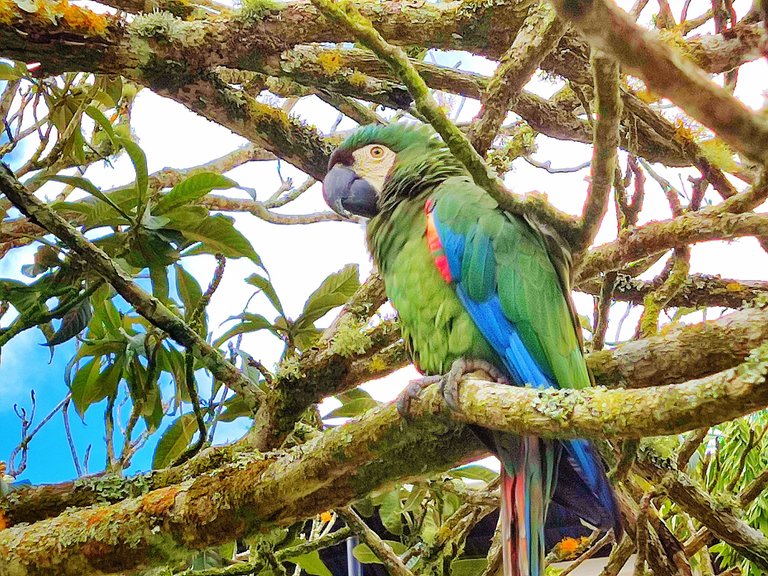

Walks in the forest can be pleasant but, the same time a great opportunity to discover fauna and flora out of the ordinary. It is the opportunity to appreciate these living beings in their natural habitat. You must be prepared for anything that can happen. Sometimes there is so much vegetation that you must walk carefully. Some encounters are not very pleasant as when there are snakes or scorpions.
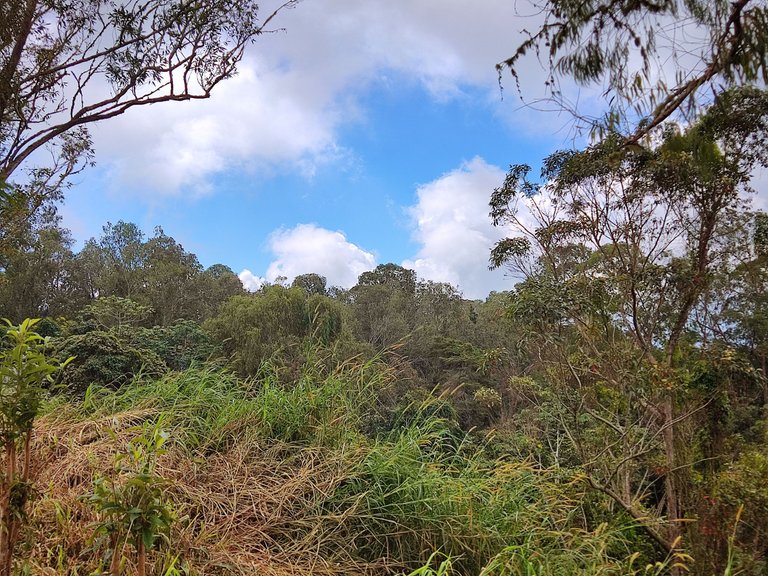
That's why I prefer to hike on trails with low vegetation but full of trees. I love that because many birds nest in them and delight you with their song. However, as I walked, I felt a stare on my head. It's a bit of a scary feeling. Suddenly I stopped and began to look carefully up at the branches above me. It was very quiet, but eyes followed my every move. It is at times like this that all your senses are sharpened. So I fine-tuned my vision and was able to find my "watcher".
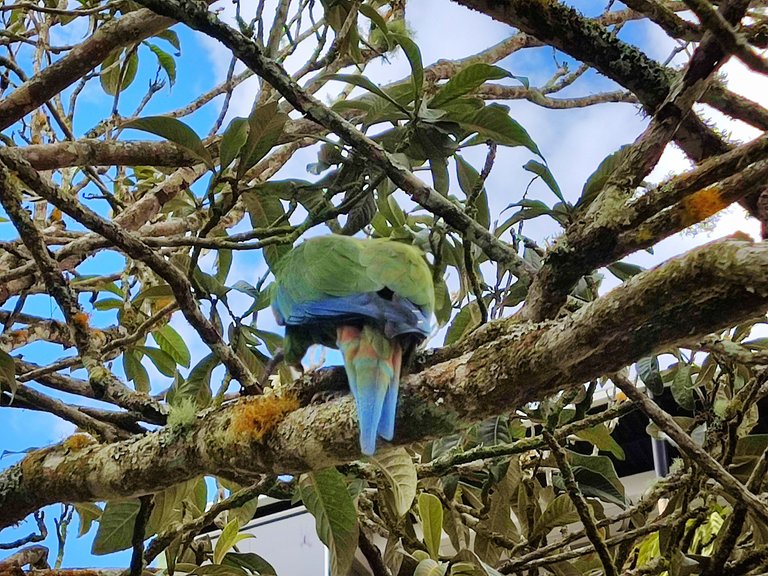
It was a medium-sized bird with green plumage that blended in with the leaves of the tree. What a surprise! I had never had the opportunity to encounter such a bird before.

The scientific name of this bird is Ara severus. However, in different areas of the Americas, it receives a variety of local names such as macaw and maracana.
Something curious about the scientific classification of this bird is that it belongs to the Order Psittaciformes (from the Greek "Psittakos" parrot + suffix "formes"), that is, here are the birds with "parrot shape". In other words, it is a medium-sized bird with a hooked beak. Belonging to the Psittacidae family, it is related to parrots, parakeets, and parakeets, so this is a specimen that is considered very boisterous and able to reproduce words because it has a sound structure that is located between the trachea and bronchi. This structure is called the syrinx, consists of a series of cartilaginous rings and membranes that vibrate and emit sounds. The syrinx should not be confused with vocal cords. It is only a resonating apparatus.

This bird can measure from head to tail up to 50 cm. However, the Ara severus is called a "dwarf parrot" because it is one of the smallest species within the Ara genus.
This bird inhabits wooded areas in several South American countries such as Venezuela, Colombia, Brazil, Bolivia, Peru, and the northern part of Argentina. However, there is also an important population in Panama, Honduras, and Mexico. Although they can be found in relatively low areas, it is common to find them in mountainous areas 800 meters above sea level. But this is not rigid, since I am at 1200 meters, and I was able to find this specimen.
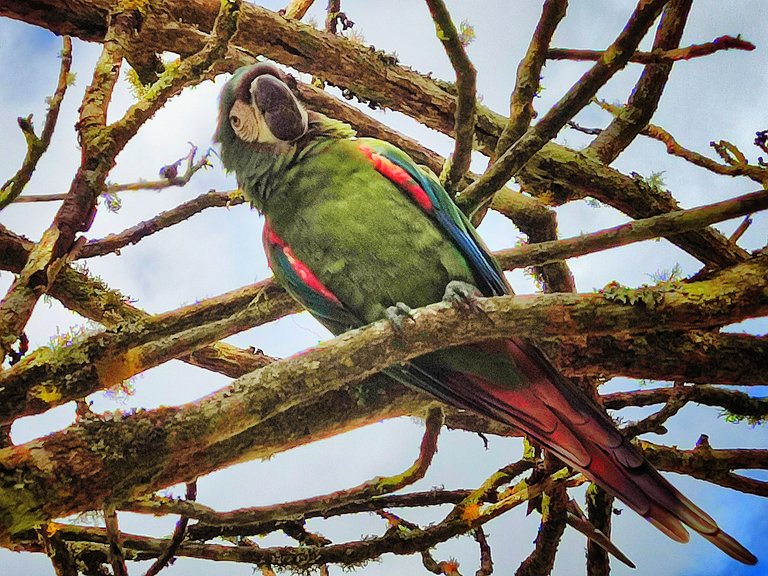
All birds of the genus Ara are characterized by brightly colored feathers. Some have intense red feathers all over their bodies with blue wings. Others have their bodies covered with yellow feathers and blue wings. However, although the Ara severus has more discreet colors, it is still a beautiful specimen. This bird has green feathers that allow it to camouflage itself in the foliage of the trees, but the electric blue of its wing feathers gives it away 🤣
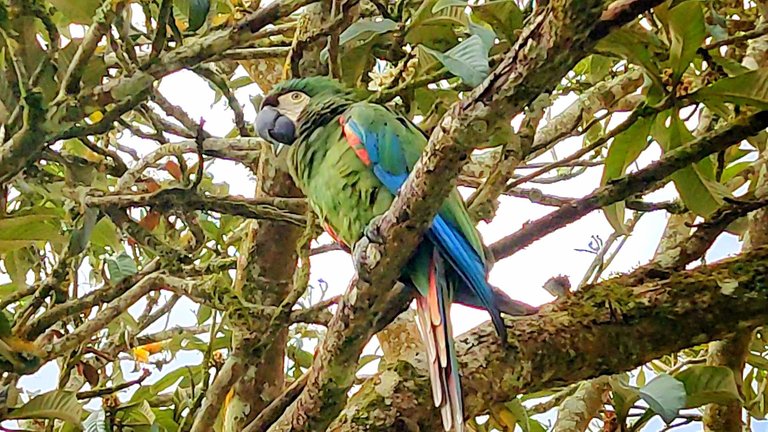
It is common to see these macaws in flocks or at least in pairs, but this one was alone. Perhaps it was resting on the branch of this tree or looking for something to eat. It saddens me to think that this was a bird whose mate may have died, since these birds are monogamous, and when their mate dies, they wander alone 😔.
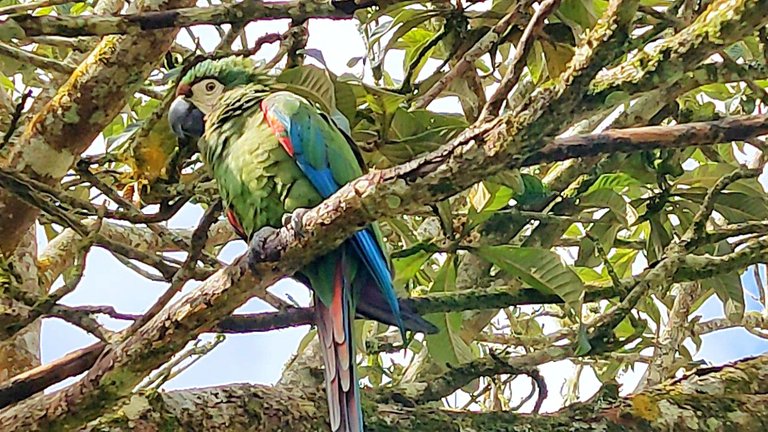
I cling to the thought that this bird was on this branch enjoying some tasty fruit, as there are some fruit trees nearby.


But don't think that these birds only feed on fruits. Their strong beak allows them to feed on seeds and some insects.
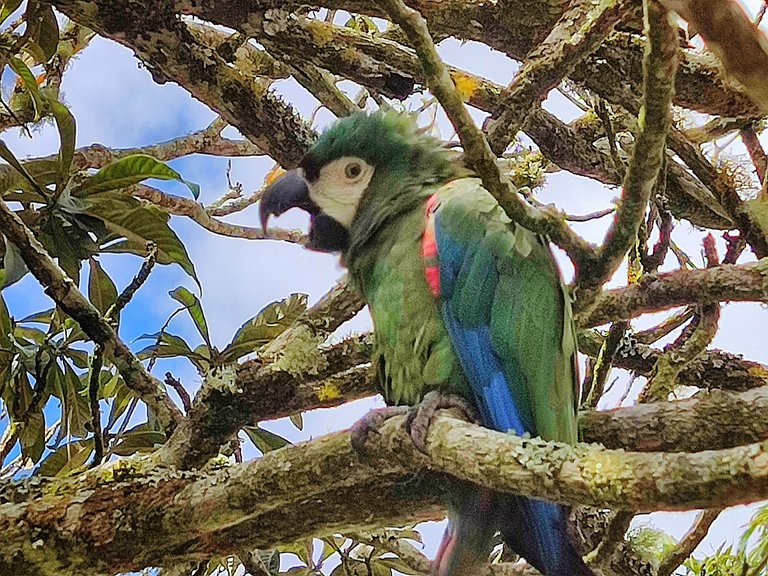
Although at the beginning our encounter was very silent, this macaw started to make some funny sounds. For a moment, I saw him open his beak as if yawning. Maybe he was sleepy, and I was interrupting his nap?

The beauty of these birds sometimes represents a danger to them. Many hunt them to trade them. This is an act that I abhor too much and puts them in danger of extinction. This bird has a low reproduction rate, laying 2 to 4 eggs a year. However, this is a very long-lived bird, as in the wild they can live up to 40 years, which can guarantee some new macaws in their fertile years.

There is nothing better than seeing animals in their natural habitat. Perhaps it is not common to see such a bird every day, but if you manage to find one like me, try to enjoy the moment without harming it. Consider yourself lucky to have seen this type of exotic bird in the wild. It is a priceless gift! If you want to immortalize the moment, devices such as cell phones and cameras are an excellent option to preserve in images or videos the beauty of these birds.

All images are property of the author
(Camera cell phone: POCO X3 Pro, Xiaomi)

Reference:
Complete mitochondrial genome of chestnut-fronted macaw (Ara severus, Psittaciformes)

https://twitter.com/252821528/status/1598380414904958976
The rewards earned on this comment will go directly to the people( @chaodietas ) sharing the post on Twitter as long as they are registered with @poshtoken. Sign up at https://hiveposh.com.
We appreciate your work and your post has been manually curated by zoology team (oscurity,nelinoeva) on behalf of Amazing Nature Community. Keep up the good work!
Thank you.
very nice!
We appreciate your work and your post was manually curated by @none! from the DNA team!
Reach us on Discord to learn more about the project!
Thank you.
Dear @chaodietas,
Your support for the current HiveSQL proposal (#138) is much appreciated but the proposal will expire soon!
May I ask you to review and support the new proposal so HiveSQL can stay free to use for the community?
You can support the new proposal (#247) on Peakd, Ecency, Hive.blog or using HiveSigner.
Thank you!
Que bonito, Dios lo bendiga.